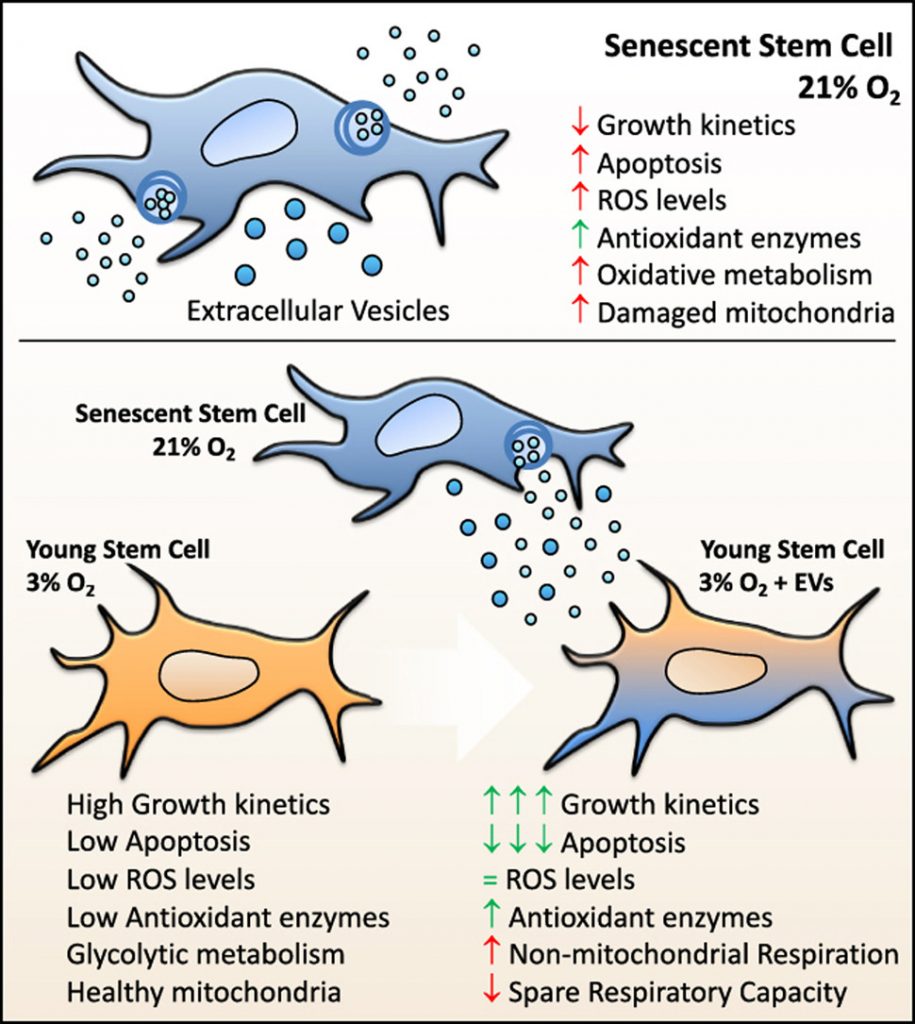Senescent Stem Cell EVs Trigger Adaptive Mechanisms in Young Stem Cells

Extracellular vesicles’ biogenesis, shedding, and uptake are redox-sensitive. Indeed, oxidative stress conditions influence extracellular vesicles’ release and content, which can modulate the redox status of the receiving cells.
In a recent study published in Redox Biology Journal, Mas-Bargues et al. aimed to assess the effect of extracellular vesicles from human dental pulp stem cells cultured under 21% O2 (senescent stem cells) on human dental pulp stem cells cultured under 3% O2 (young stem cells).
Extracellular vesicles were isolated by ultracentrifugation from senescent stem cells and prepared for the treatment of young stem cells at a final concentration of 10 μg/mL. Cells were analyzed for antioxidant gene expression, mitochondrial bioenergetic parameters, ROS production, culture kinetics, and apoptosis.
The results showed hat extracellular vesicles from senescent stem cells induce overexpression of antioxidant genes (MnSOD, CAT, and GPx) in young stem cells, which show an increased non-mitochondrial oxygen consumption, accompanied by reduced maximal respiration and spare respiratory capacity without altering mitochondrial membrane potential. This is accompanied by improved cell proliferation, viability, and migration rates and a reduction of apoptosis.
Thus, extracellular vesicles from senescent stem cells trigger an adaptive response in young stem cells which improves their antioxidant defenses and their proliferation, migration, and survival rates. This suggests that extracellular vesicles can modulate the cells’ microenvironment and the balance between proliferation and senescence.
In summary,
- Oxidative stress conditions can trigger senescence and influence EVs’ release and content.
- Oxidative stress-released EVs reduce apoptosis thereby improving cell proliferation, viability, and migration rates.
- Oxidative stress-released EVs reduce mitochondrial energetic metabolism.
- Oxidative stress-released EVs induce overexpression of antioxidant gene expression.
- Oxidative stress-released EVs provide an adaptive response.
Image Credits: Mas-Bargues et al. Redox Biology (2023)